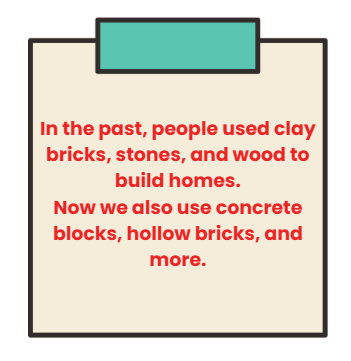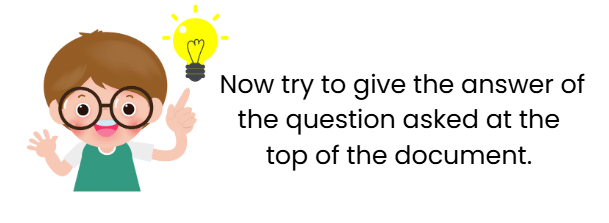Shapes Around Us Class 4 Notes Maths Chapter 1 Free PDF
Introduction
In this chapter, we will explore the exciting world of shapes that surround us in buildings, objects, and even nature. From your pencil box to the tallest towers—everything is made up of different shapes. But have you ever thought about what makes a cube different from a cylinder, or how a circle is made?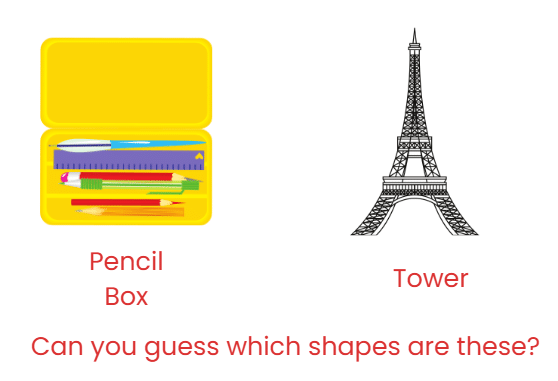
Let's build with Diksha!
Diksha visited famous monuments in Delhi, like:
India Gate
Qutub Minar
Akshardham
Jantar Mantar
...and many more!
She saw how big and beautiful these buildings were.
Now she wants to build a small model of India Gate using her wooden blocks.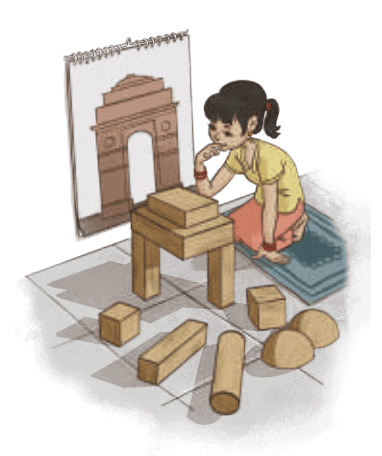
What Is a Model?A model is a small copy of something big — like a mini version of a real building!
You can use shapes like cubes, cylinders, and rectangles to make a building model with blocks.
Let’s Build a Model Using Blocks!
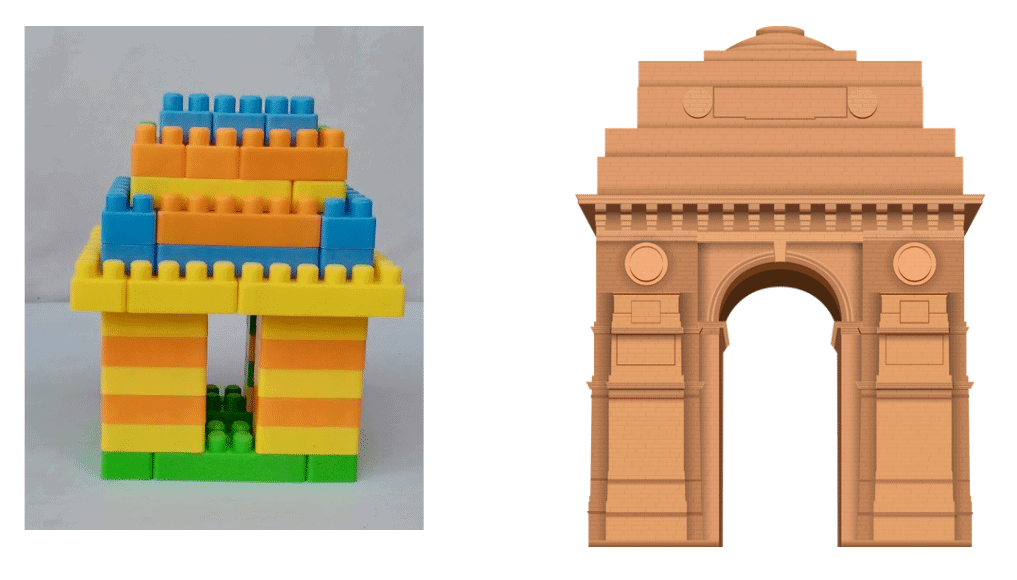 India Gate is made using blocks
India Gate is made using blocks
1. What parts are in your model?
Ans: The model has a roof made of blue and orange blocks, two pillars or walls on the sides, and a base made with green blocks.
2. Why did you choose those parts?
Ans: Because the real India Gate also has a big top part like a roof, two tall pillars or sides, and a strong base to stand on.
3. What shapes can you use?
Ans: You can use cubes and rectangles for the roof and walls, and square blocks for the base. This model does not use curved shapes like the real India Gate.
4. How is your model similar to the real building?
Ans: The model has a large top section like the India Gate, an open space in the middle like the archway, and pillar-like blocks on the sides.
5. How is it different from the real building?
Ans: The model is made of colorful plastic blocks instead of stone. It doesn’t have any carvings or small details. It also looks more like a simple house than an actual arch.
Q: What is common in all these bricks?
A: They are all solid and mostly shaped like rectangular blocks. They are strong and used to build things.
Understanding Shapes
We are going to learn following things in this chapter which are as follows:
Shapes are figures or objects that have a specific form or outline. They can be flat (2D) or have volume (3D). Shapes are everywhere around us and help us describe the world.
Look around your classroom or home — can you name some objects that have shapes?
Ans: Yes! A clock (circle), a notebook (rectangle), a dice (cube), and a ball (sphere).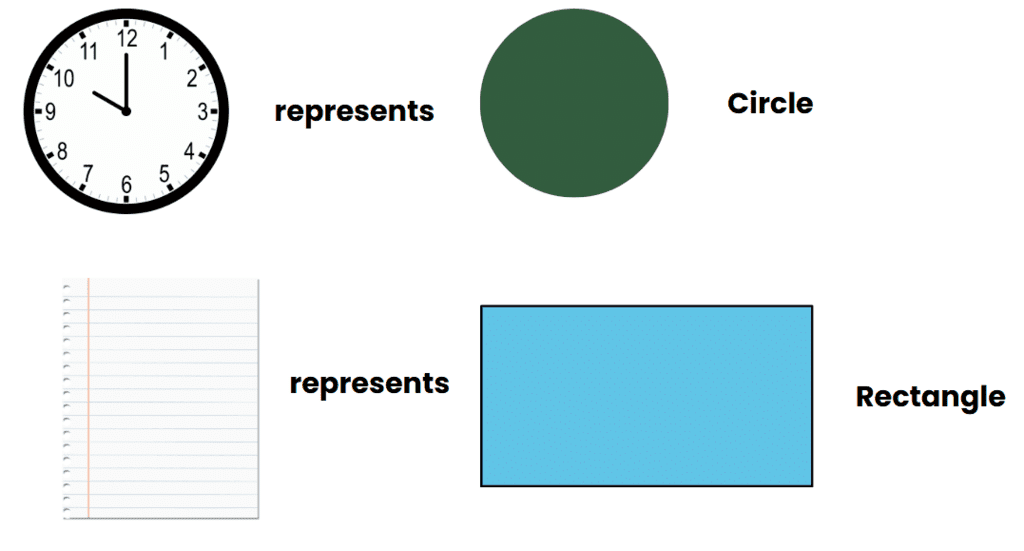
1. 2D Shapes (Two-Dimensional)
These are flat shapes with only two dimensions - length and width.
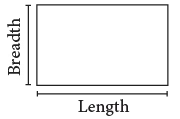
Examples of 2D Shapes:
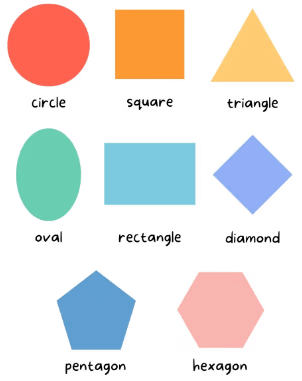 Examples of 2-D Shapes
Examples of 2-D Shapes
1. Circle
- Round shape with no corners or edges.
- Example: A coin.
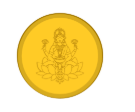
2. Square
- Four equal sides and four right angles.
- Example: A chessboard square.
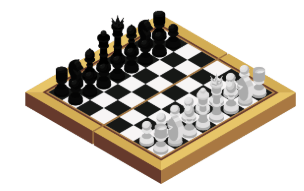
3. Rectangle
- Opposite sides are equal, with four right angles.
- Example: A book cover.
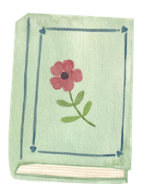
4. Triangle
- Three sides and three corners.
- Example: A slice of pizza.
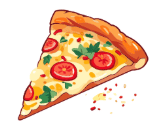
2. 3D Shapes (Three-Dimensional)
These shapes have three dimensions - length, width, and height.
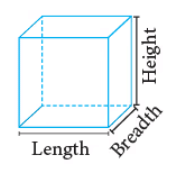
Examples of 3D Shapes: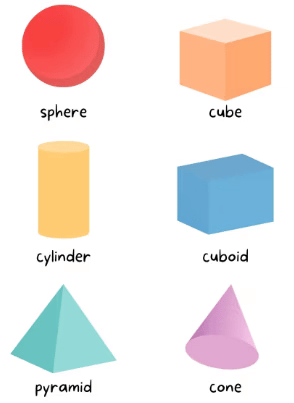
1. Cube:
- All sides are squares.
- It has 6 faces, 12 edges, and 8 corners (vertices).
- Example: Rubik's cube.
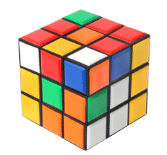
2. Sphere:
- No edges or corners.
- It’s perfectly round in all directions.
- Example: Soccer ball.
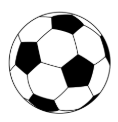
3. Cylinder:
- Two identical flat circular ends and one curved side.
- It has 2 edges and no corners.
- Example: Soup can.
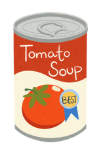
4. Cone:
- One circular base and a single vertex (point).
- It has 1 edge.
- Example: Party hat.
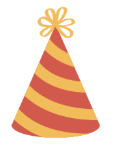
5. Rectangular Prism (Cuboid):
- Faces are rectangles.
- It has 6 faces, 12 edges, and 8 vertices.
- Example: brick.
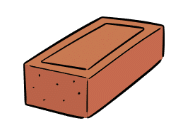
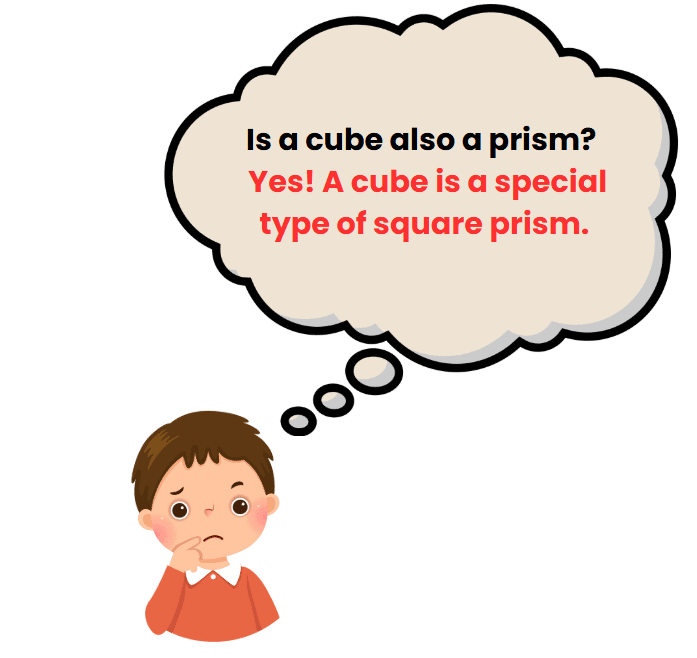
Sorting 3D Shapes
3D shapes, unlike 2D shapes, have depth in addition to height and width. This extra dimension gives 3D shapes their unique properties and allows them to occupy space.
Let's delve into the different types of 3D shapes and their characteristics.
1. Cube
- A cube is a 3D shape that has 6 faces, all of which are squares.
- It has 8 corners (also known as vertices) where the edges meet.
- A cube also has 12 edges, which are the lines where two faces meet.
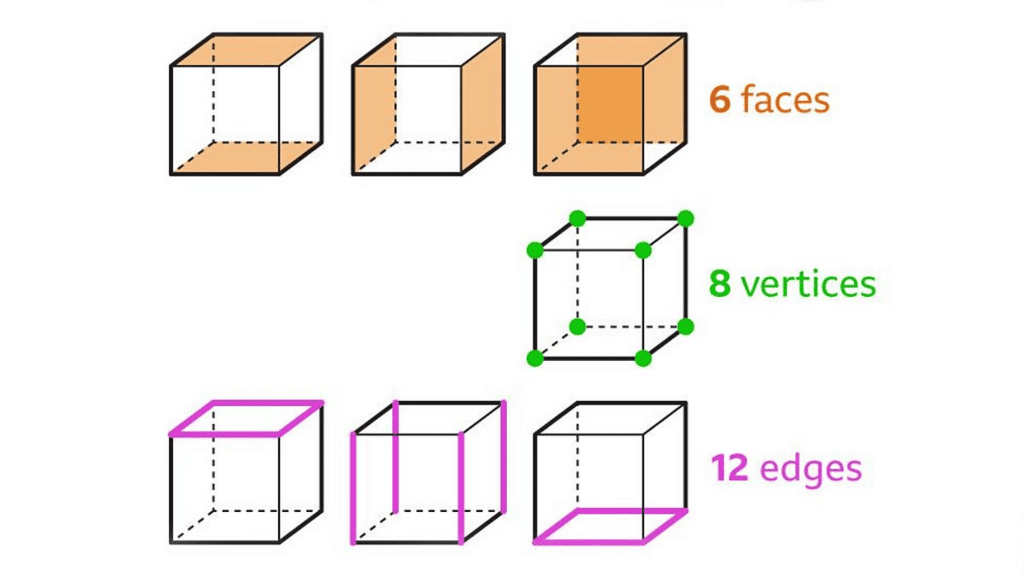
Some examples of a Cube shape are: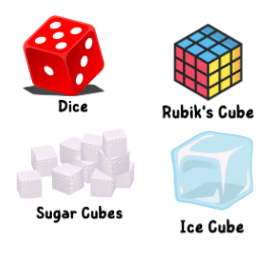
2. Cuboid
- A cuboid is similar to a cube but has 6 faces that are rectangles.
- It also has 8 corners and 12 edges, just like a cube.
- A cuboid is also known as a rectangular prism.
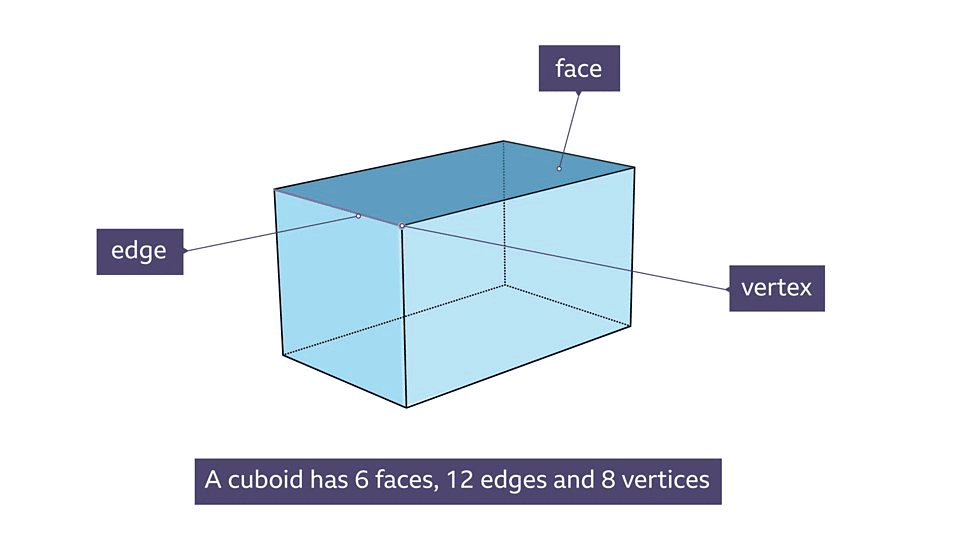
Some examples of Cuboid are: 
3. Triangular Prism
- A triangular prism has 5 faces, 2 of which are triangles and 3 are rectangles.
- It has 6 corners and 9 edges.
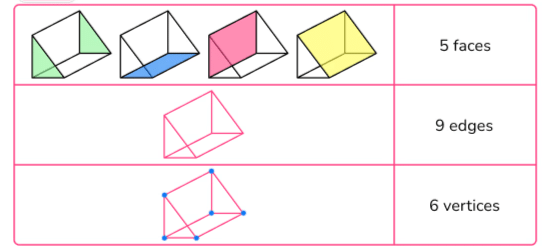
Some examples of Triangular Prism are: 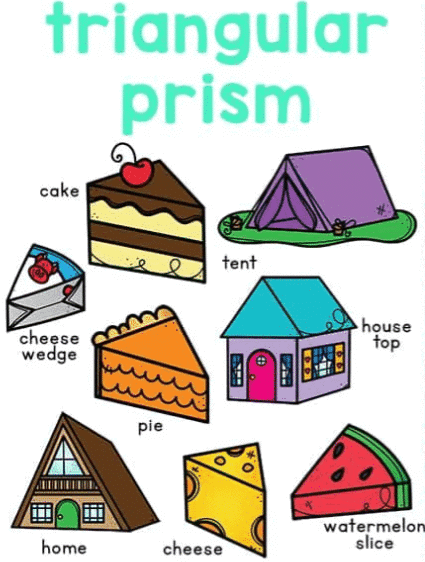
4. Square Pyramid
- A square pyramid has 5 faces, with 1 square base and 4 triangular faces.
- It has 5 corners and 8 edges.

Some examples of Square Pyramid are:
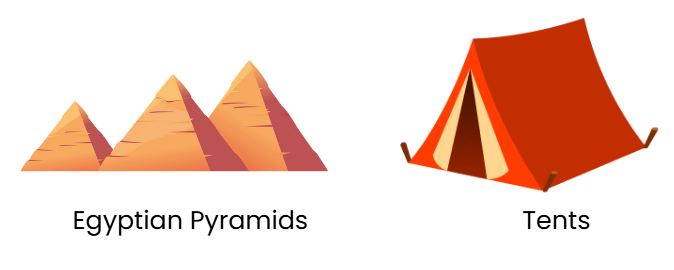
5. Triangular Pyramid
- A triangular pyramid, also known as a tetrahedron, has 4 triangular faces.
- It has 4 corners and 6 edges.
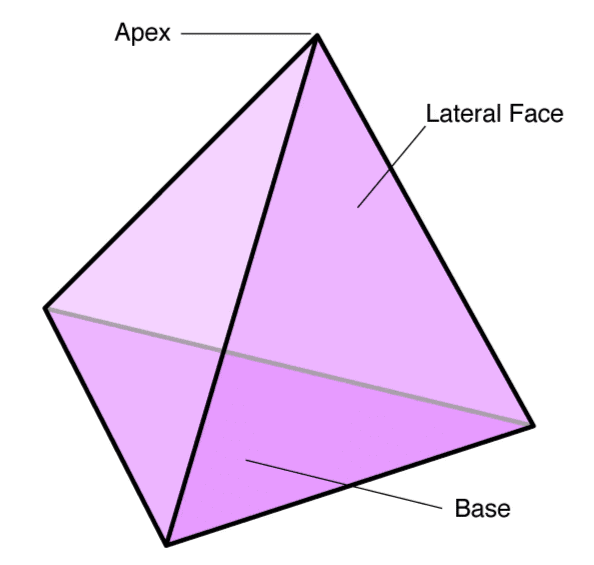
Some examples of Triangular Prism are: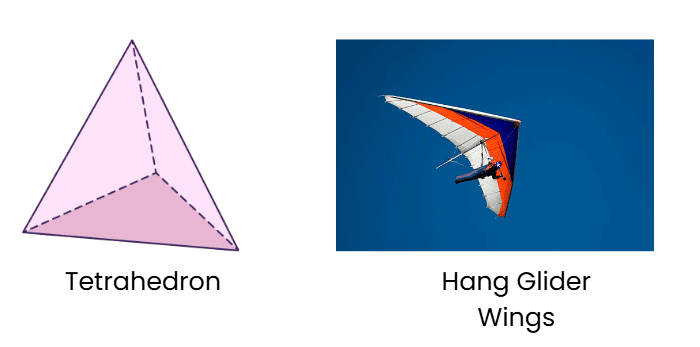
6. Sphere
- A sphere has 1 curved face and no edges or corners.
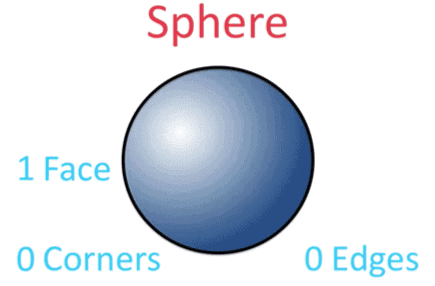
Some examples of Sphere are:
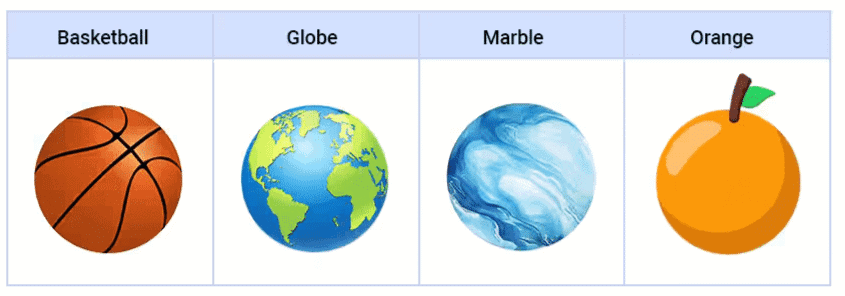
7. Cylinder
- A cylinder has 2 flat circular faces, 1 curved face, and 2 edges where the curved face meets the circular faces.
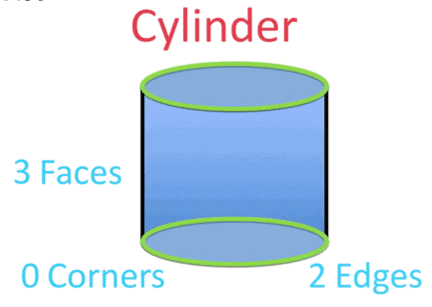
Some examples of Cylinder are: 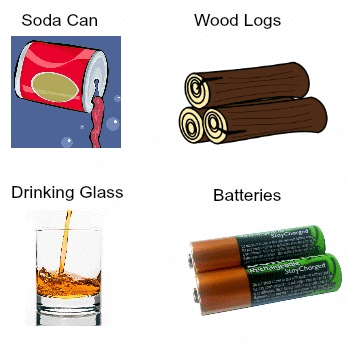
8. Cone
- A cone has 1 flat circular face, 1 curved face, and 1 edge where the curved face meets the circular face.
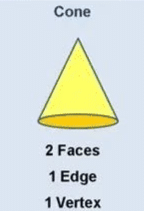
Some examples of Cone are: 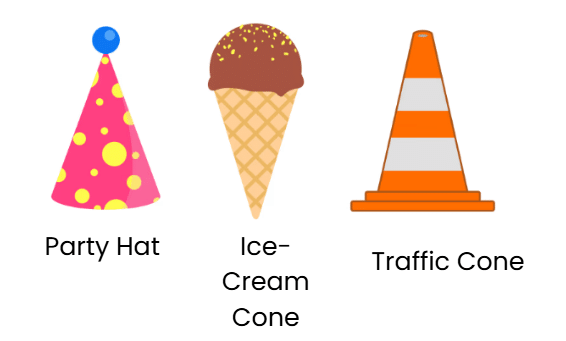
What’s the difference between a prism and a pyramid?
A prism has two same-shaped flat faces (top and bottom).
A pyramid has only one flat base, and all sides are triangles that meet at a point.
Parts of 3D Shapes
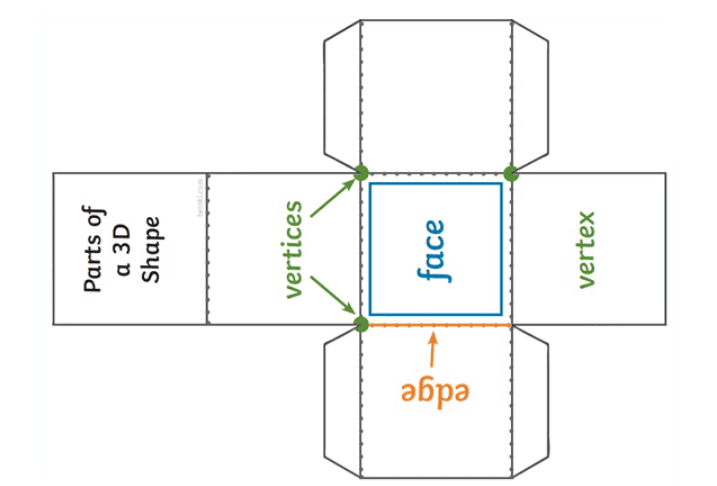
1. Face
A face is a flat surface on a 3D shape.
In the image, the square labeled "face" is one of the cube’s flat sides.
2. Edge
An edge is the line where two faces meet.
In the image, the arrow labeled "edge" points to one such line between two faces.
3. Vertex and Vertices
A vertex is a point where three edges meet. It is also known as a corner.
The green dots in the image show the vertices.
When there is more than one corner, we use the word vertices.
As you can observe, the faces of a cube and cuboid are flat, whereas a cylinder, cone and sphere have curved faces.
Now, let us find out how many faces, edges and corners does each shape have. For a cube and cuboid, pick up a die and a geometry box and count the number of faces, edges and corners. You will notice that both the cube and cuboid have 6 faces, 12 edges and 8 corners.
Now, from the figure given above, try to count the same for cone, cylinder and sphere. You will find that: A cylinder has 3 faces (2 flat, 1 curved), 2 edges and 0 corners. A cone has 2 faces (1 flat, 1 curved), 1 edge and 1 corner. A sphere has only 1 curved surface.
Euler’s Formula. This formula describes the relationship between the number of faces (F), corners (V), and edges (E) in many 3D shapes. For convex polyhedra, the formula is F + V - E = 2. This mathematical relationship helps in understanding the properties of 3D shapes.
Nets of 3D Shapes
A net is a two-dimensional layout that can be folded to form a three-dimensional shape. It shows how the surfaces of a 3D object are connected.
Example. The net of a cube consists of 6 squares, which when folded along the edges, form the faces of the cube. Similarly, the net of a cuboid is made up of 6 rectangles that fold to create the rectangular faces of the cuboid.
Take a die or any other cube and trace all its faces on a sheet of paper. What is the shape of all the six faces? They are all squares of the same size. Thus, you see that a cube can be made from six squares joined together in a particular manner.
They are all squares of the same size. Thus, you see that a cube can be made from six squares joined together in a particular manner.
We have many more nets (arrangements of these squares) that can be folded up to form a cube.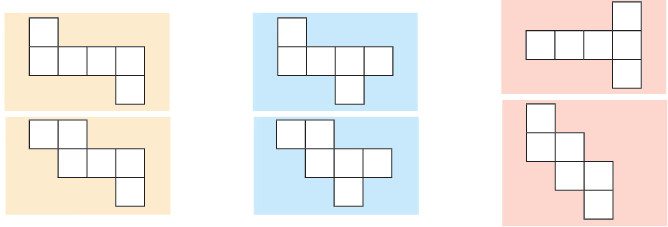 We can also form nets with 5 square faces. In this case it will be a box with no lid.
We can also form nets with 5 square faces. In this case it will be a box with no lid.
When Lines Meet
An angle is made when two lines meet at a point. This point is called the corner or vertex.
Angles are found in every shape we see — from the chair you sit in the house to the corner of your book!
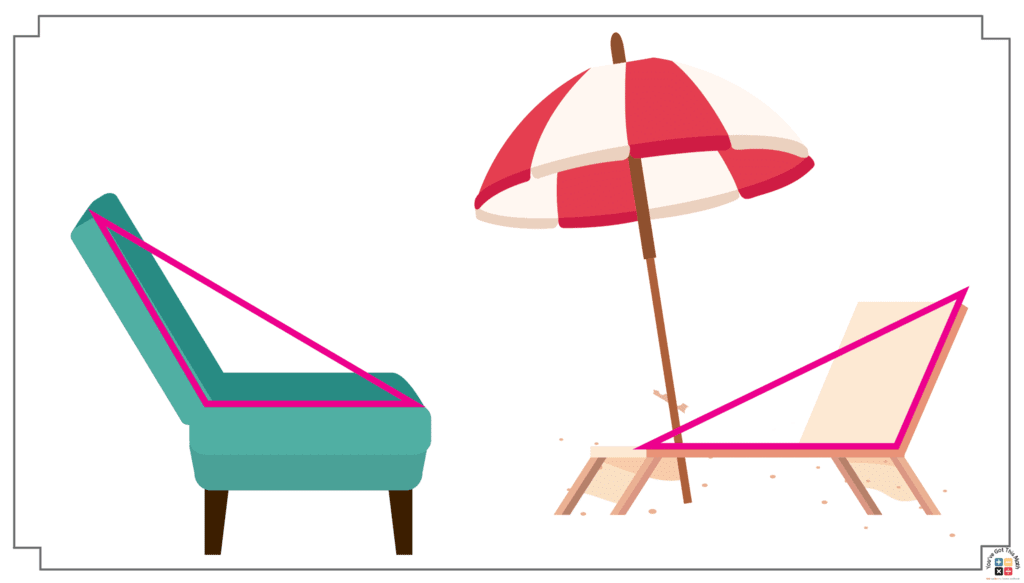
- Right Angle: An angle that measures 90 degrees, resembling the corner of a square.
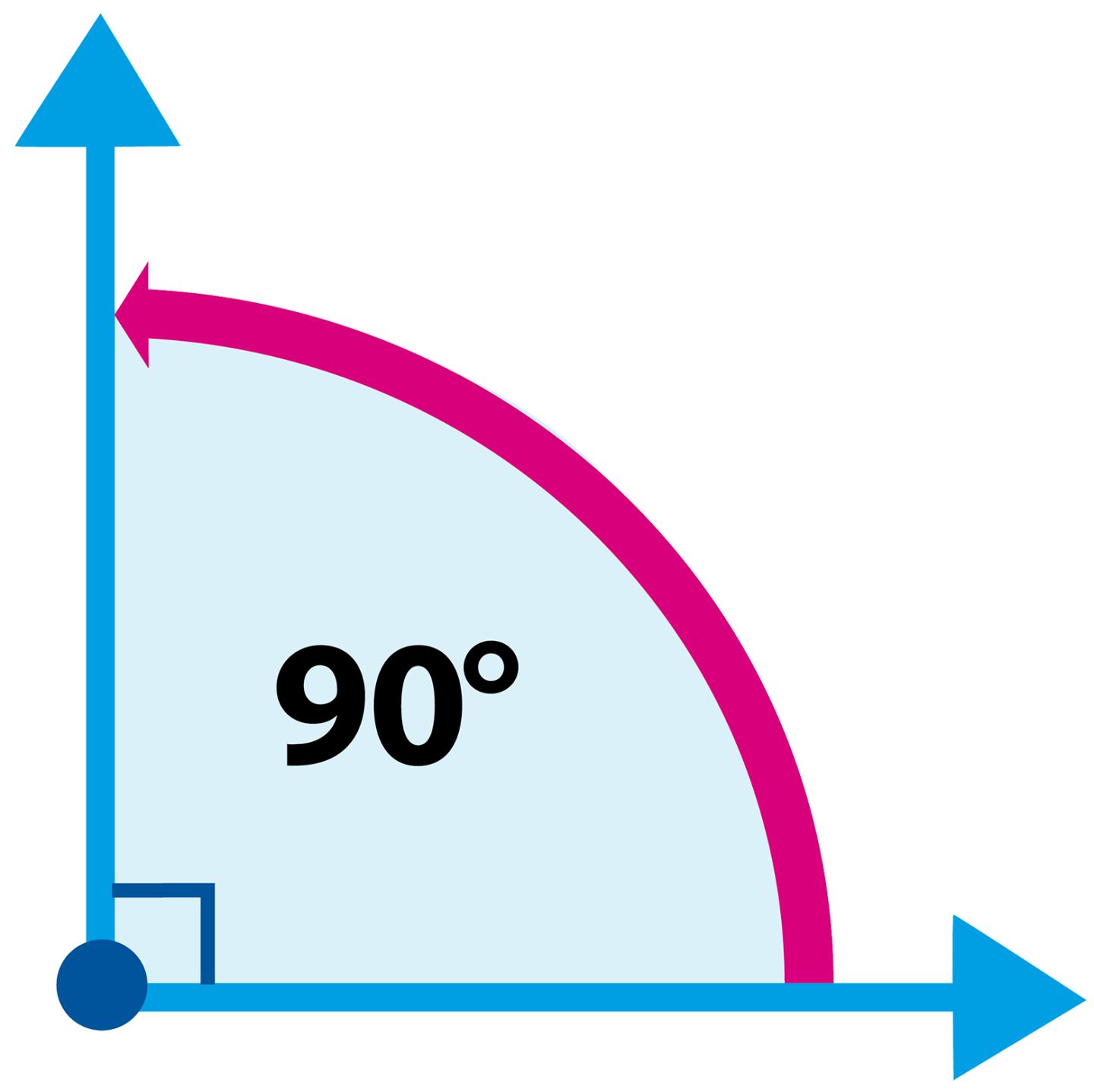
- Acute Angle: An angle smaller than a right angle.

- Obtuse Angle: An angle larger than a right angle.

Shapes with Straws
- Triangles: Shapes with three sides that can have acute, right, or obtuse angles.


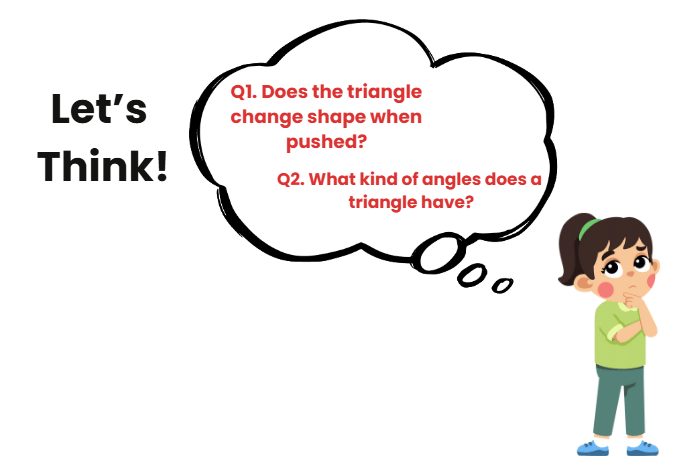
Similarly you can try with Rectangular shape.
Q: What result we will get?
Ans: All corners in a rectangle are right angles.
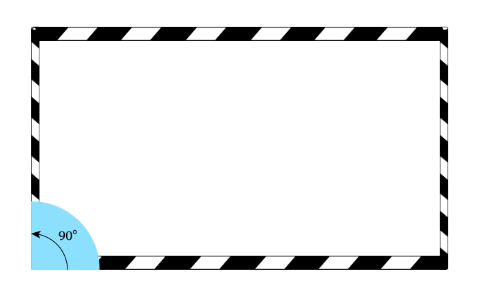
Let's Summarise: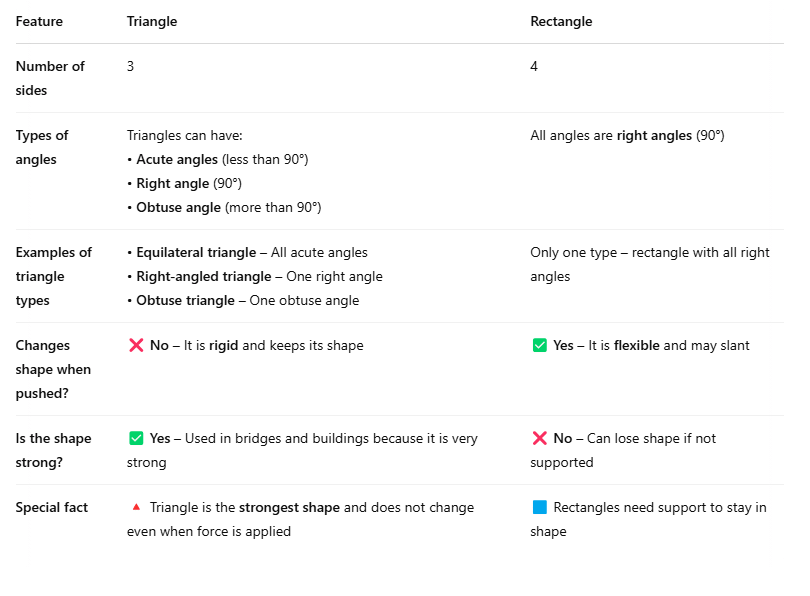
Sorting Shapes
By Faces: A face is the flat surface of a 3D shape. Just like how a dice has 6 flat sides, each flat side is called a face.

By Edges: An edge is where two faces meet. It's like the corner of a box or the side of a triangle.
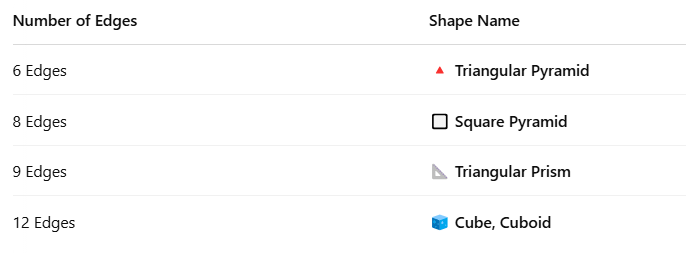
By Angles: An angle is where two lines or edges meet. Angles are found in flat (2D) shapes like triangles and rectangles.

Some Solved Examples
Q1: Mira sees a coin, a book, and a pizza slice. What shape is each one?
Ans: 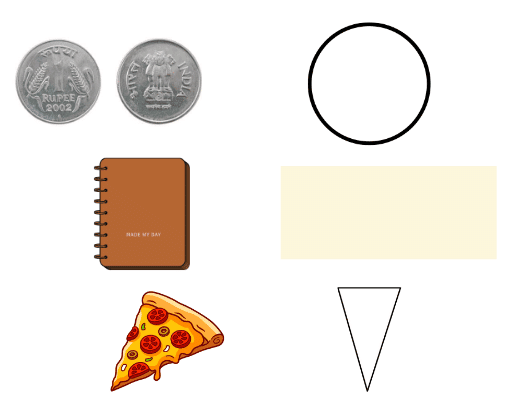
A coin is a circle(round with no corners).A book is a rectangle (opposite sides equal).
A pizza slice is a triangle (3 sides and 3 corners).
Q2: Which of these shapes has a curved surface: cube, cone, or sphere?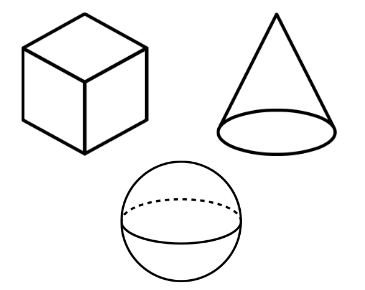
Ans: Cone and sphere have curved surfaces. A cube has only flat faces.
Q3: A cuboid has 6 faces, 8 corners, and 12 edges. Does it follow the rule: Faces + Vertices – Edges = 2?
Ans: 6 + 8 – 12 = 2
Yes, it follows Euler’s Formula.
|
58 videos|324 docs|14 tests
|
FAQs on Shapes Around Us Class 4 Notes Maths Chapter 1 Free PDF
| 1. What are 2D shapes and how are they different from 3D shapes? |  |
| 2. Can you explain what angles are and why they are important in geometry? |  |
| 3. What are the properties of common shapes like squares, rectangles, and circles? |  |
| 4. How do we calculate the area and perimeter of 2D shapes? |  |
| 5. What are some real-life examples of 3D shapes we encounter every day? |  |


